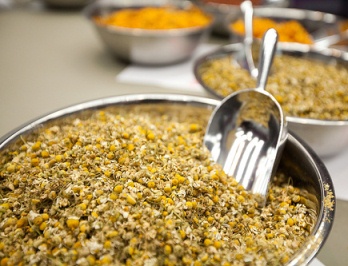Front of House: Don’t Get into Hot Water with Tea
30 March 2011By Wendy Gay, CHE
 More diners demand that their tea service show an understanding of style and quality. Good news is that programs are now available for training and credentialing.
More diners demand that their tea service show an understanding of style and quality. Good news is that programs are now available for training and credentialing.
A significant trend in dining today is the re-emergence of the popularity of tea. Tea is no longer just the stuff of grandmothers. Million-dollar deals are now being consummated over afternoon teas in some of the nation’s top hotels.
Not just an alternative to coffee, tea can claim health benefits such as vitamin content and high levels of antioxidants and polyphenols, and has a history as medicine. Everywhere you look, people today are drinking more tea.
This brings us additional opportunities for educating students. Among these opportunities is the chance to help our students learn about tea and how it is grown and prepared, the types of tea and the variety of styles of tea service.
The more we learn about tea, the more similarities to wine become apparent. As most wines come from fruit of the varieties of the vitis vinifera, the majority of teas come from the leaves and buds of the camellia sinensis plant. In the same way that wine can be made from other fruits and can also be infused with a variety of other flavors, tea can be made from a number of herbs and can also be infused. Like wine, tea is strongly influenced by terroir, so tea grown in one location will taste differently from a similar type grown elsewhere. Also like wine, tea’s flavor can affect and be affected by the foods eaten with it.
Teas can be chosen based on a number of factors. They can have a range of taste profiles, and this range can be extended with infusions. They can be chosen for specific health benefits or for their levels of caffeine. Actually, nearly any type of tea can be made to have reduced caffeine quite easily. The types of tea, listed in ascending order of caffeine content, include White (30-55 mg.), Green (35-70 mg.), Oolong (50-75 mg.) and Black (60-90 mg.). Pu Erh is actually a fermented form of green tea and tends to have a very low level of caffeination. Coffee, by comparison, has 150-200 mg.
Just as diners can be very knowledgeable about artisanal wine, bread, olive oil and cheeses, many now demand that their tea service also show an understanding of style and quality. Tea service can range from a simple tea caddy that displays several tea bags to a full tea ceremony. Formal high tea, for example, can also be a basis for specialized pastry work. Whatever tea tradition you favor, whether English, Japanese, Chinese, Tibetan, Irish, Russian or Indian, tea is more than a drink. It is about culture and about cultures.
There’s much to learn about tea, and programs are now available for training and credentialing. The Specialty Tea Institute has a three-level training and certification program. In New York, The Institute of Masters of Tea Arts provides advanced training in the art of Chinese tea and professional certification for tea masters.
I raise my cup—Earl Grey tonight—to greater knowledge of tea and food pairing. I remain
At your service,
Wendy
Wendy Gay, CHE, is an instructor in the culinary department at The Art Institute of Atlanta.
